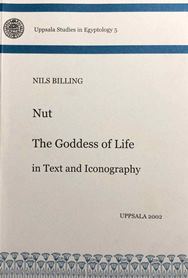| Main » Ad Board » ДРЕВЕН ЕГИПЕТ И АФРИКА » Религия и философия |
| 31.05.2020, 12:18 | |
Древноегипетската богиня Нут е олицетворение на небето. По нея плава слънчевата ладия на Ра, която тя поглъща всяка вечер за да я роди лъчезарно на сутринта. Част е от божествената енеада на Хелиополис, Тя е дъщера на Шу и Тефнут, съпруга на своя брат Геб (Земята) и майка на Озирис, Изида, Сет и Нефтида. Изобразява се още като небесната крава, свиня кърмеща малките си или гигантско дърво, а неин символичен фетиш е стълбата (мекет) с която са погребвани мъртвите, за да се изкачат на небето. Настоящата монография е детайлно изследване на писмените паметници и изображенията, касаещи тази богиня. Nils Billing - Nut, the goddess of life in text and iconography, Uppsala, Uppsala University, 2002 АЛТЕРНАТИВЕН ЛИНК / ALTERNATIVE LINK: Nils Billing - Nut, the goddess of life in text and iconography, Uppsala, Uppsala University, 2002 - на английски език, от Google Docs,формат PDF. Сваляне с ляв бутон (downloading by left button) от страницата на предоставящия сървър, после през бутона стрелка надолу/after by down arrow button.
| |
| Views: 1234 | Placed till: 30.09.2021 | Rating: 0.0/0 | |

